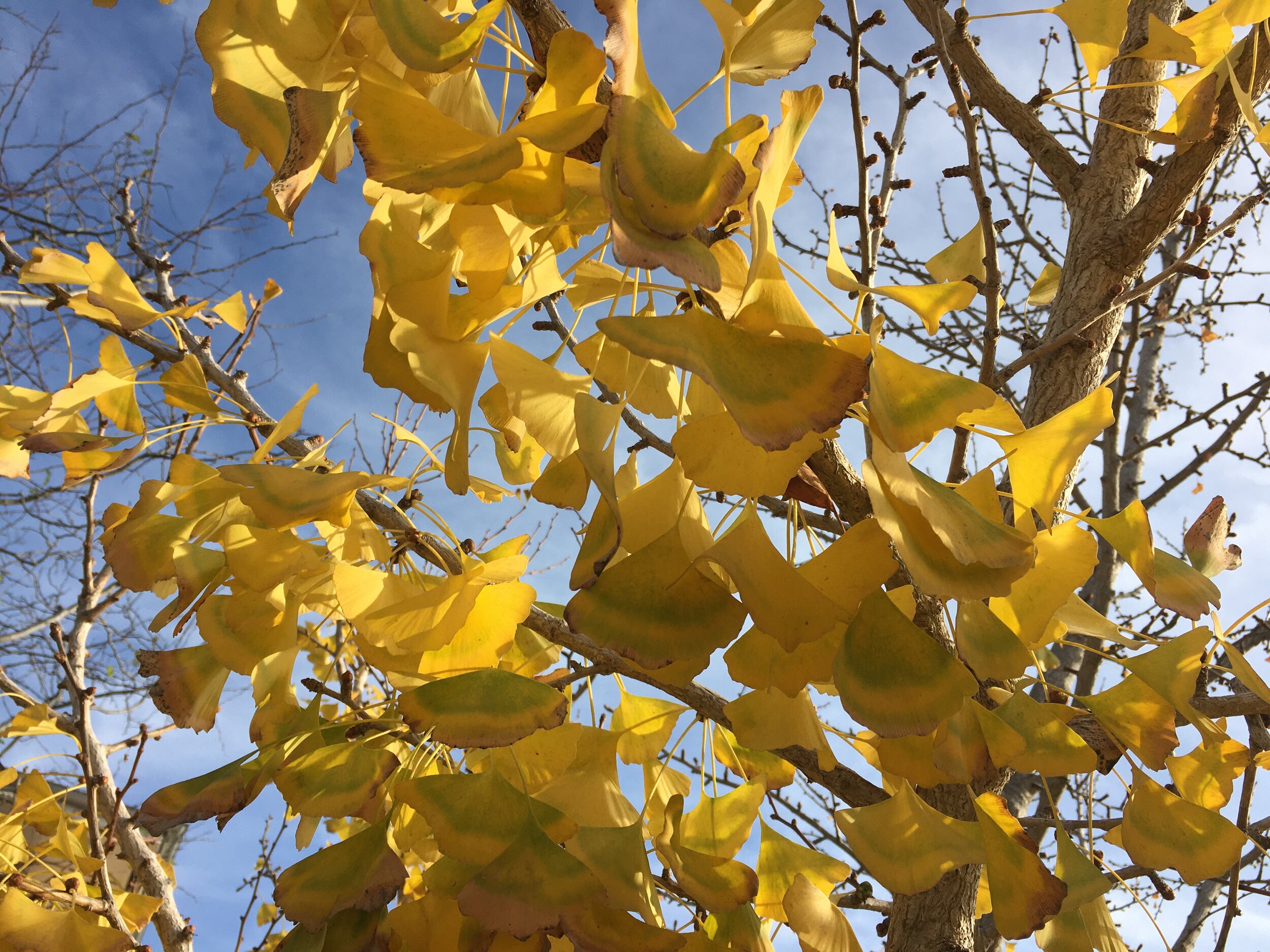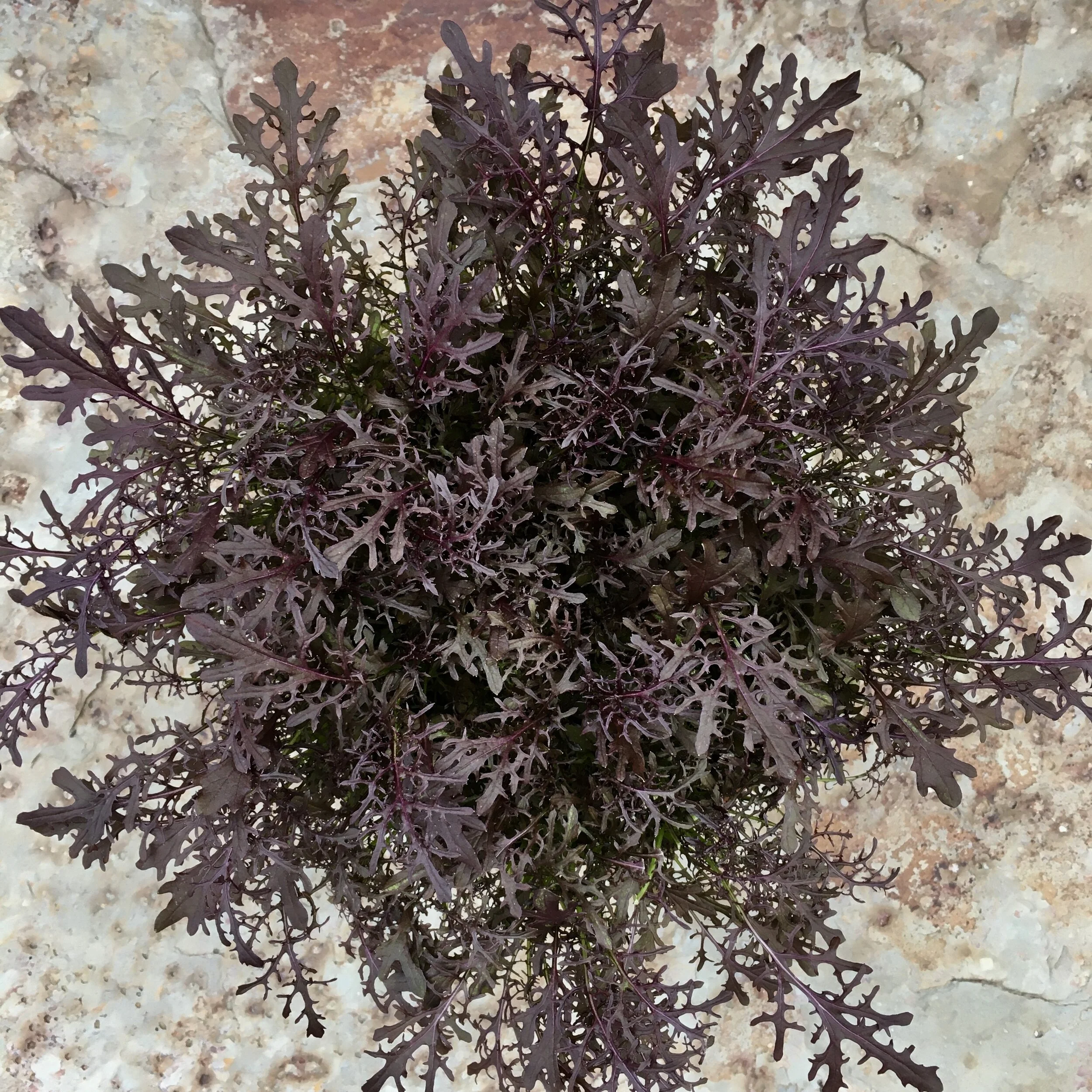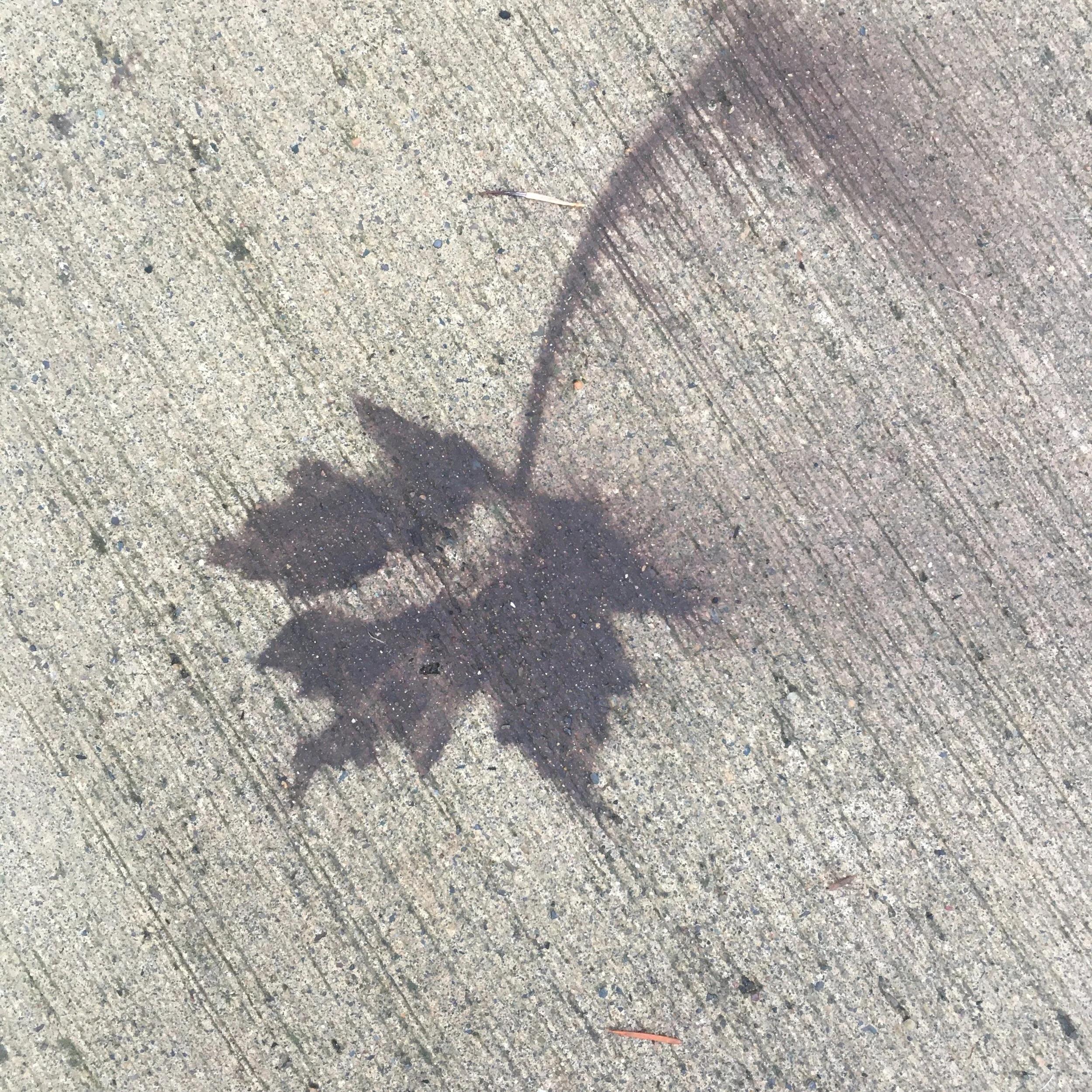Last Days of Fall
The leaves of the ginkgo tree in my front garden are a glorious golden color this year. Plentiful rain and cool temperatures likely account for the splendid display. The puddles of leaves on the sidewalk echo the memory I carry of ginkgoes in Center City Philadelphia after their “leaf dump.”
The leaves on my tree drift to the sidewalk more slowly. We don’t have a hard freeze that causes the sudden drop from the trees. I’ve raked some of them to the perennial bed under the tree but lately I just leave them on the sidewalk, hopefully to the delight of those who pass by.
Here’s an explanation from Philadelphia magazine:
The ginkgo species, which is native to China, has been found in fossils dating back 270 million years, to the early Jurassic. It’s been used in various ways throughout time — in traditional medicine, as food, and now as a very Instagram-able photo background.
According to a recent report in The Atlantic, ginkgo trees function as the East Coast’s “poster tree” of climate change: a soil microbiologist and professor at the University of New Hampshire found that, over time, the ginkgo tree’s “leaf dump” has been occurring later and later in the fall, correlating with a documented rise in seasonal temperatures.
Why do the leaves typically fall in a single day? The Atlantic’s Robinson Meyer explains it wonderfully:
In the autumn, deciduous trees form a scar between their leaves and stems to protect themselves from diseases and winter’s coming chill. Most flowering trees, like oaks and maples, form the scar at different rates, in different parts of the tree, over the course of weeks. Their leaves then fall off individually. But ginkgoes form the scar across all their stems at once. The first hard frost finishes severing every leaf, and they rain to the ground in unison.
There you have it, Philly.
Philadelphia magazine 11/14/2017 “Here’s Why Philly Is Covered in Ginkgo Leaves Now”
The Atlantic, 11/10/2017 “The Great Ginkgo Leaf Dump Is Here”
Photo credit @lauraneckstein on Twitter





